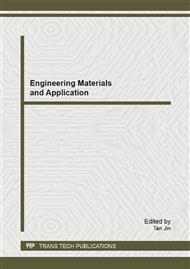p.232
p.237
p.245
p.251
p.257
p.263
p.269
p.274
p.280
The Effects of Contents of Oxygen in Argon-Oxygen Mixed Gas on Polyethylene Terephthalate (PET) Films by CCP Discharge
Abstract:
In the present work, Polyethylene terephthalate (PET) films have been exposed to capacitive coupled plasma (CCP) to improve their surface properties for fabricated devices. Contact angle measurements and atomic force microscopy (AFM) showed an increase in surface roughness resulting in the decrease of contact angle. Surface composition and morphology of the films were analyzed by X-ray photoelectron spectroscopy (XPS) and AFM. It was found that the plasma treatment modified the surfaces both in chemical composition and morphology. Change of chemical composition made the polymer surfaces to be highly hydrophilic, which mainly depends on the increase in oxygen-containing groups. And the results of optical emission spectroscopy (OES) proved that appropriate content of oxygen in mixture gas can create the greatest number of active species to form O*-C causes groups on surface which can easily form C-O-metal bonds, lead to improve adhesion properties.
Info:
Periodical:
Pages:
257-262
Citation:
Online since:
January 2013
Authors:
Price:
Сopyright:
© 2013 Trans Tech Publications Ltd. All Rights Reserved
Share:
Citation:


